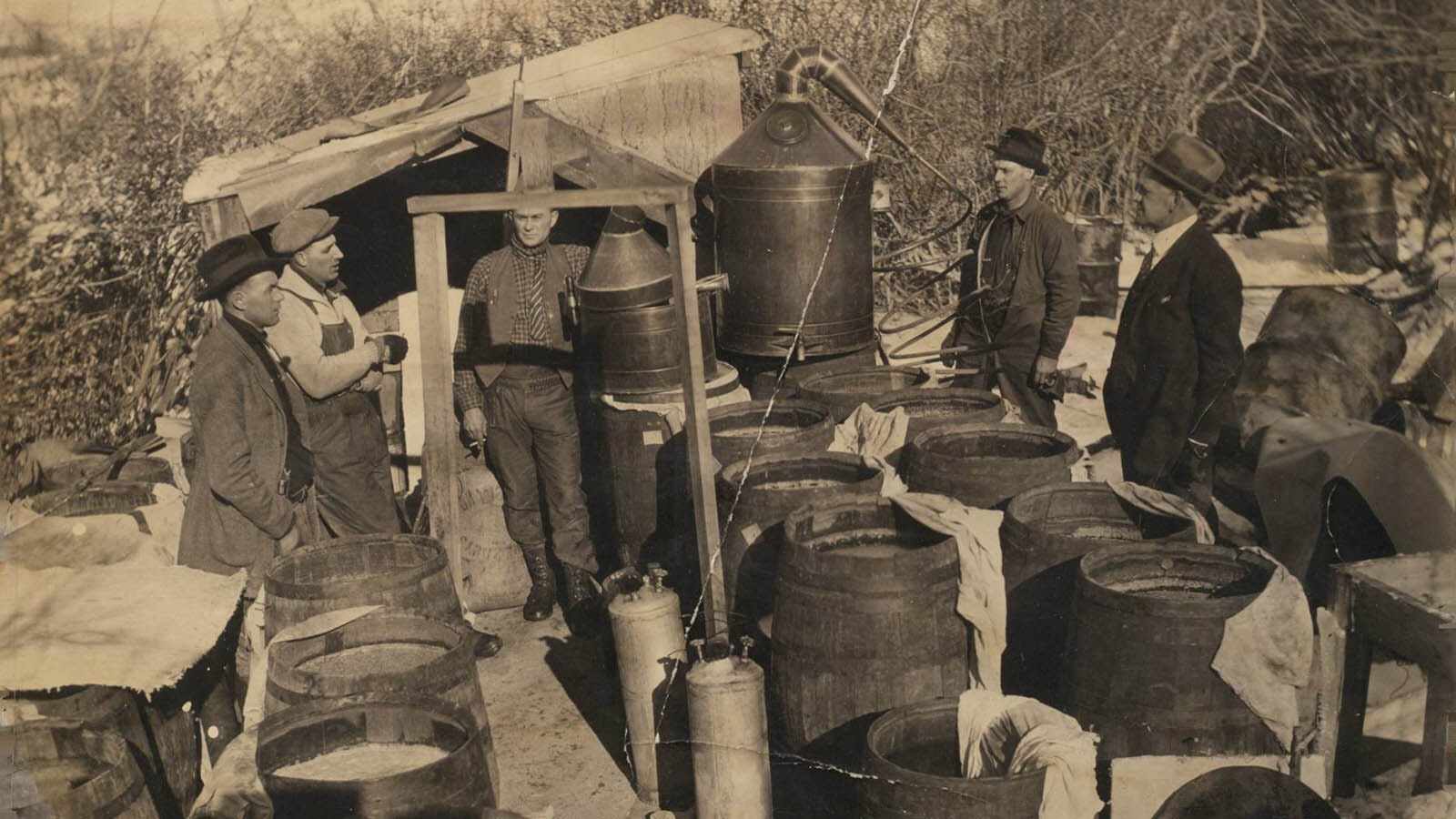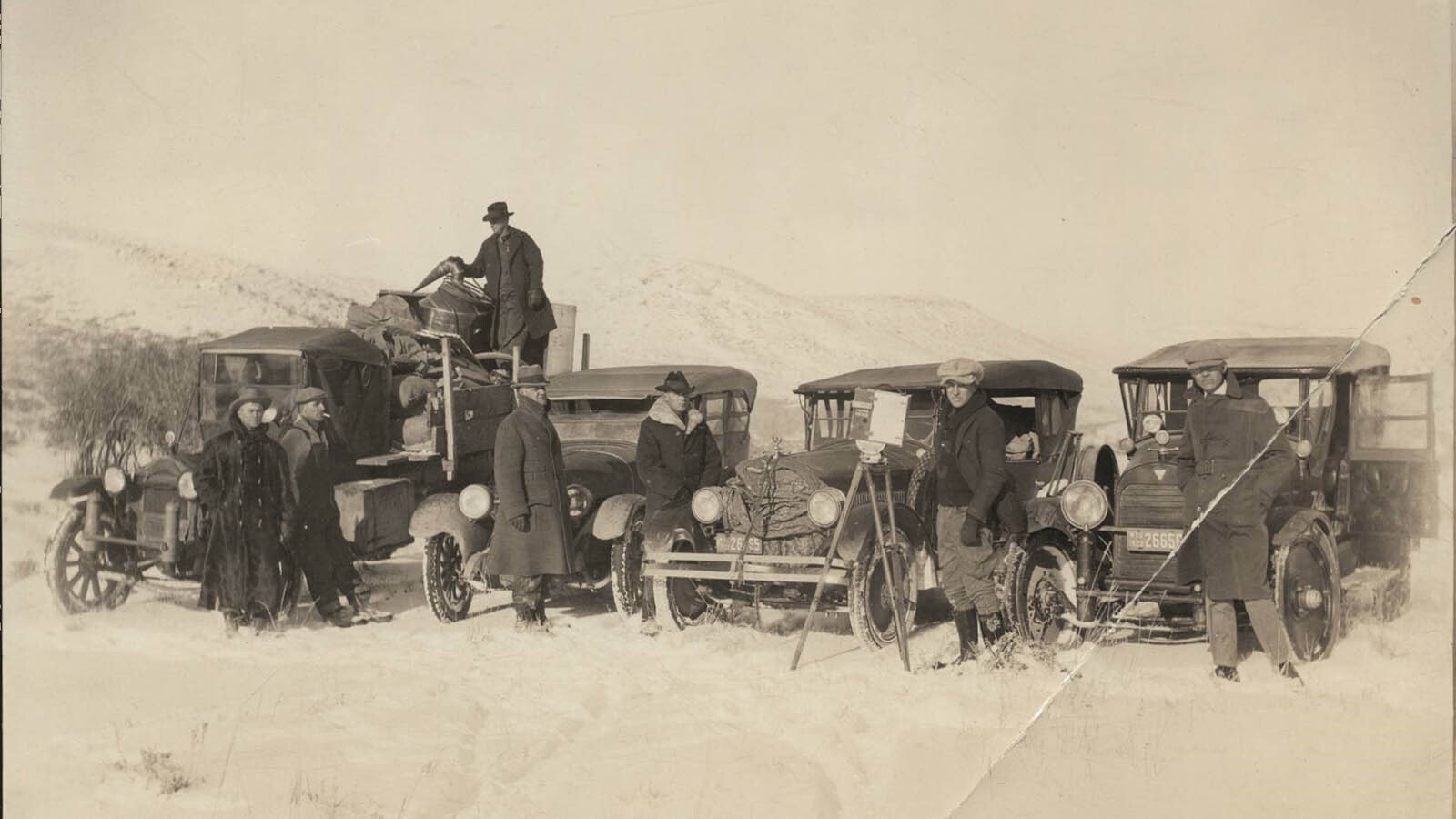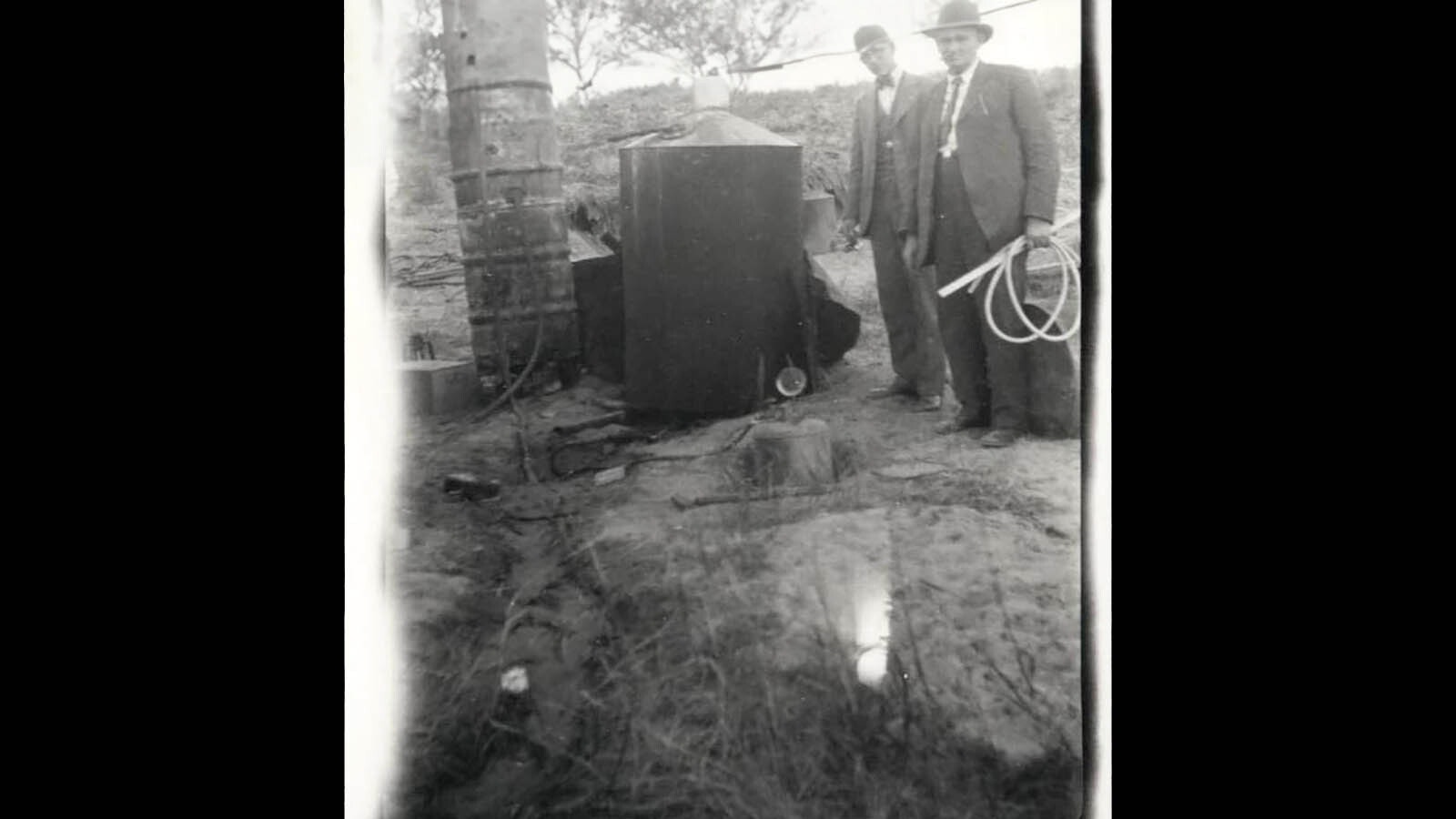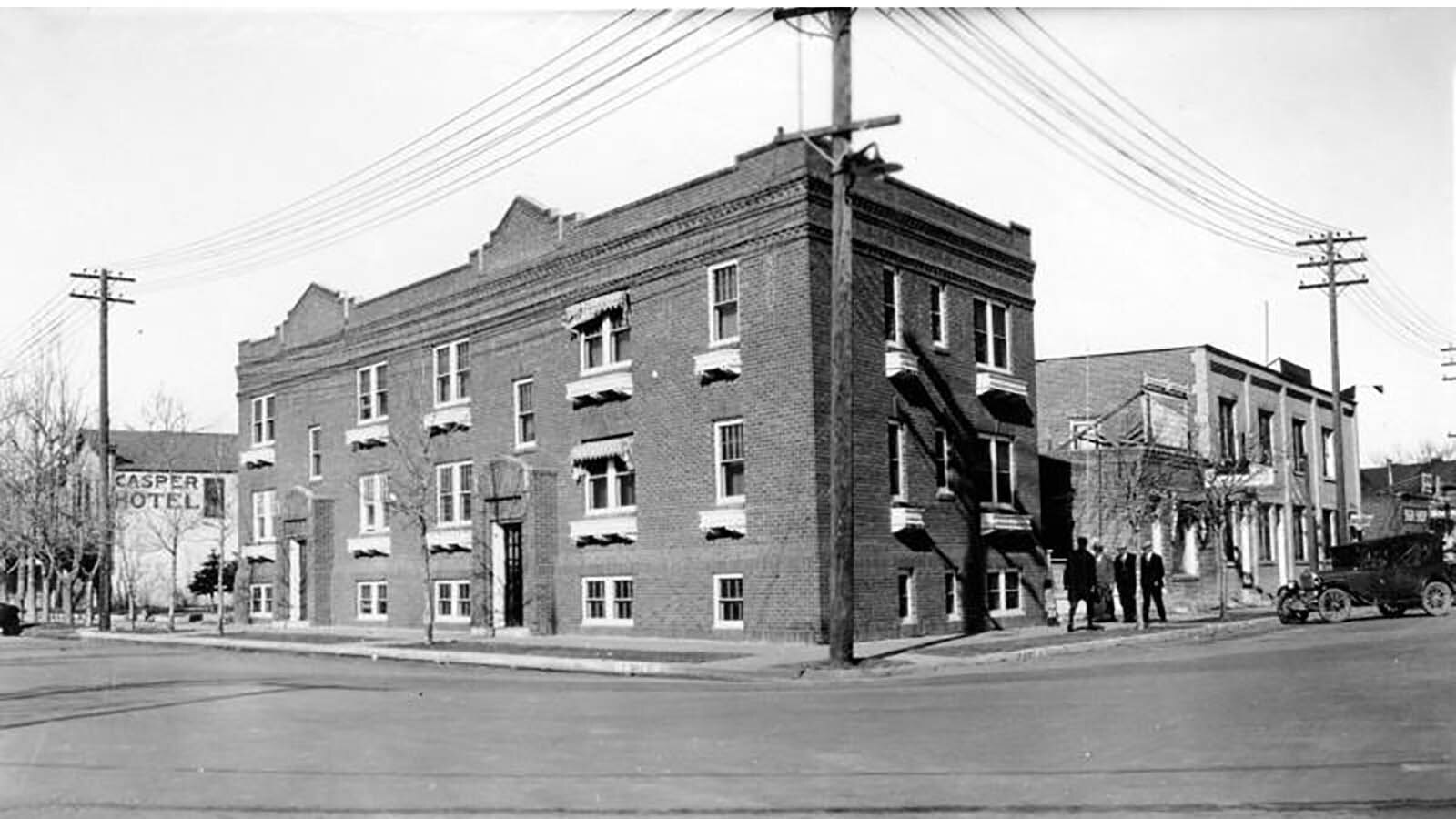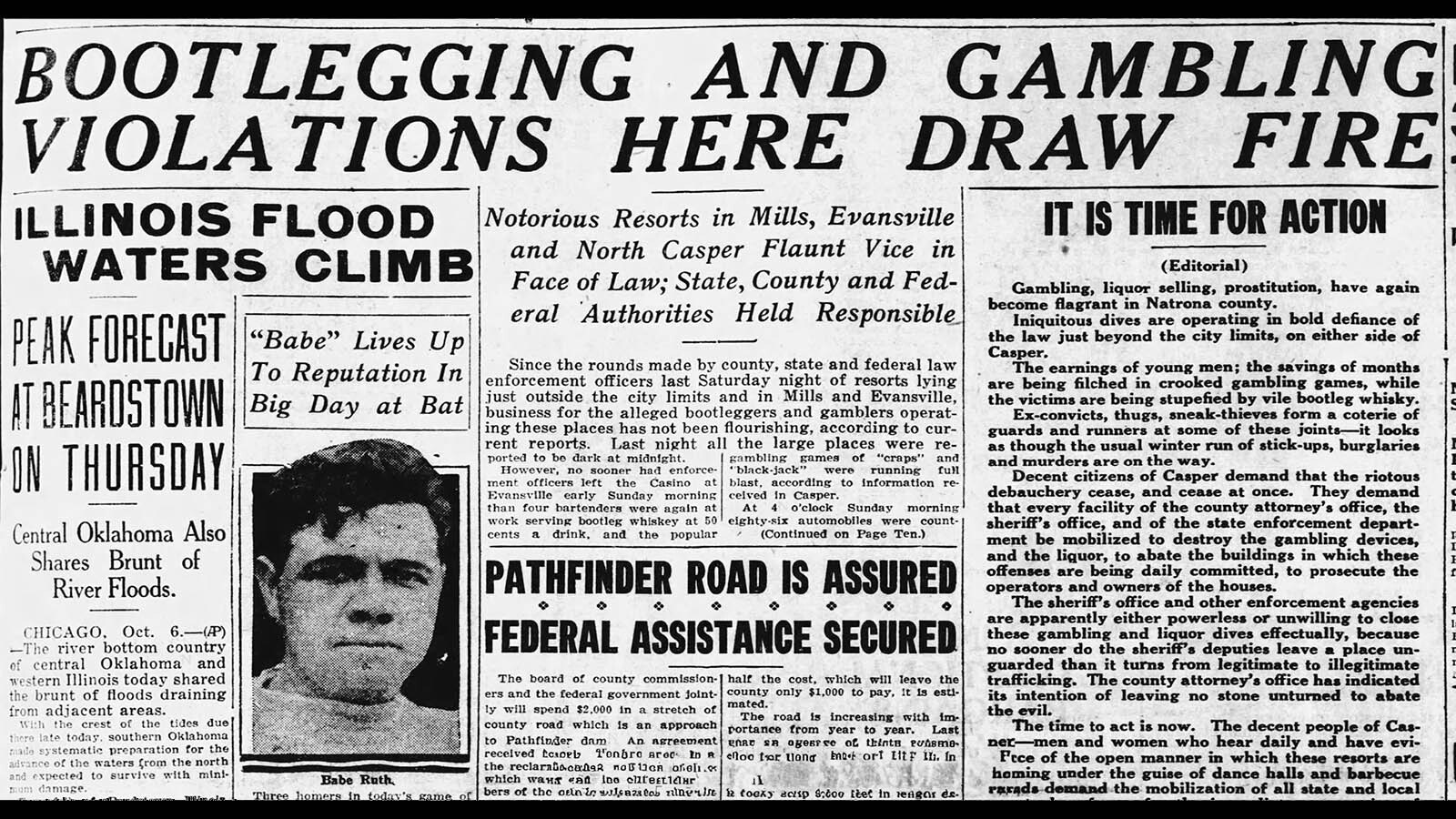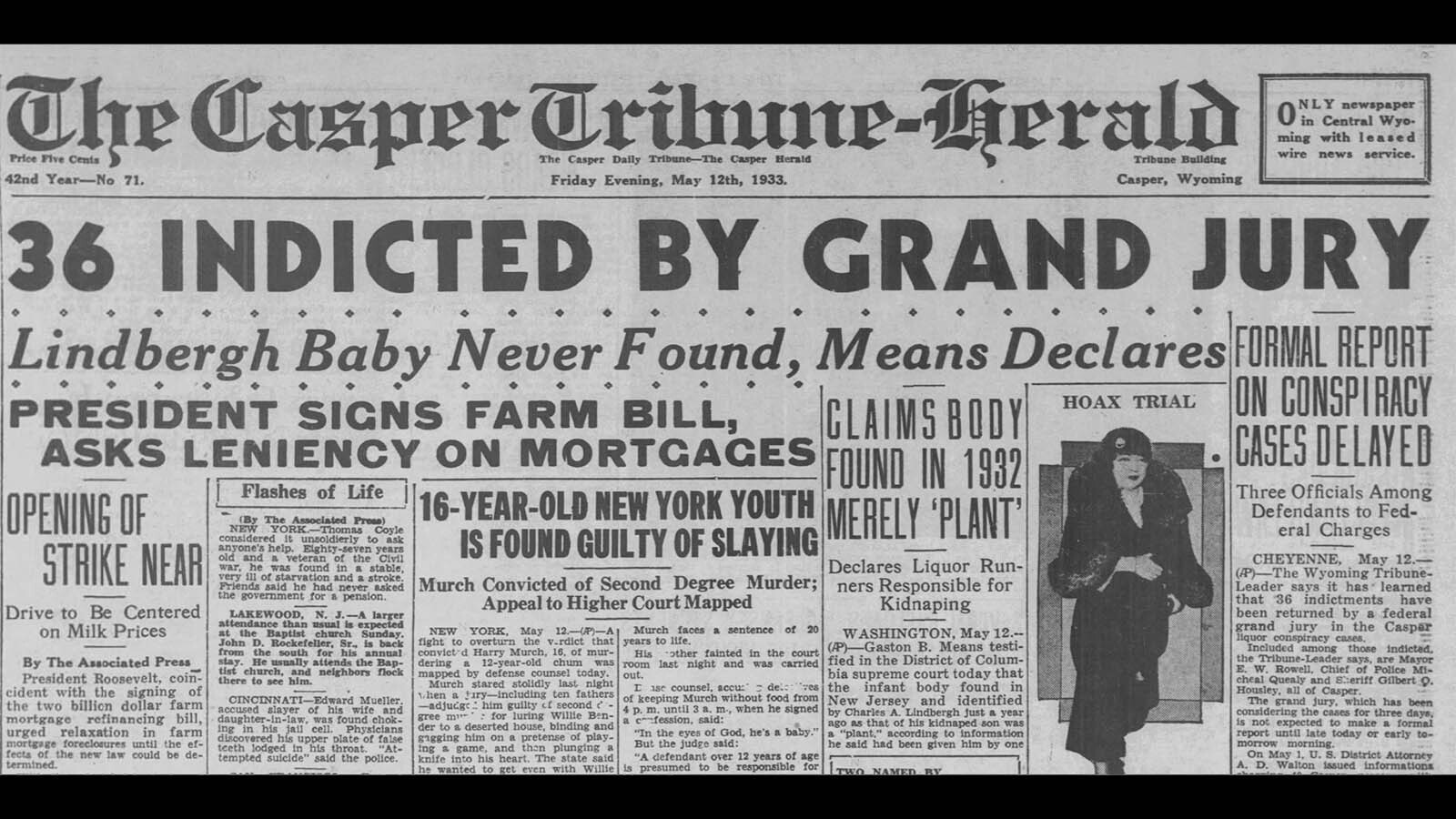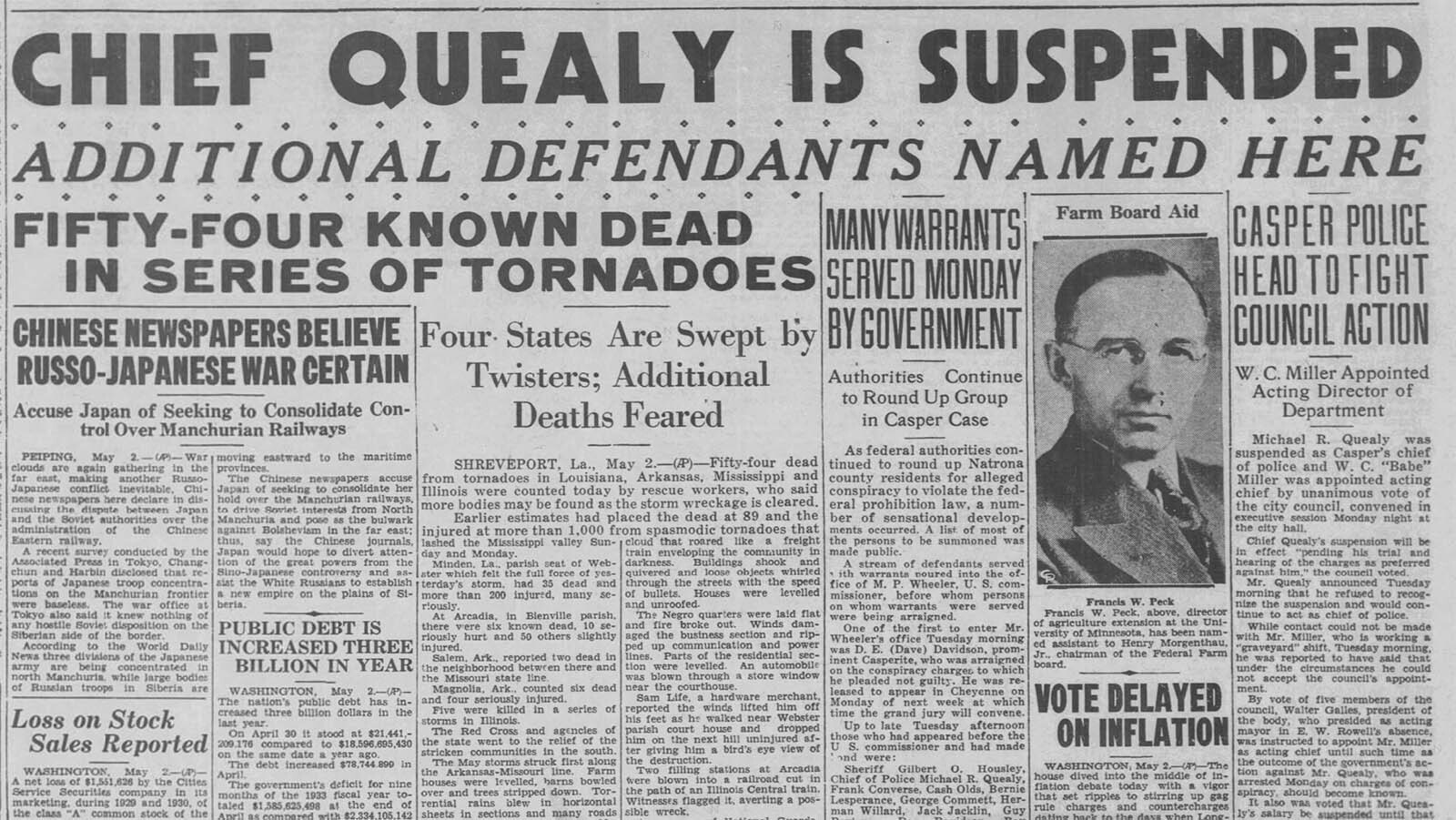CASPER — When he died in 1948, the front page of one of the Oil City’s newspapers praised him as a pioneer and a man well-known around Casper.
It said nothing about his role as a bootlegger — one of Casper’s largest rum-runners. And there was nothing about the secret ingredient he infused in his version of Western moonshine.
A true renaissance man, Dave Davidson’s curriculum vitae also included sheep rancher, oilman, real estate investor, saloon owner, trophy hunter and baseball team manager. He lived a colorful life as Casper boomed into the Oil City, and later his whisky stills were busted up during Prohibition.
“One of the most colorful figures in the early day history of Casper and the Bates Hole Section, D.E. (Dave) Davidson died at his home Monday after a lingering illness,” the Casper Tribune-Herald reported Feb. 3, 1948. “He was nearly 79.”
Davidson was born in Ohio on May 2, 1869, and at 21 sought his own Manifest Destiny in the West. A favorite story he told was that he dumped the first wheelbarrow of dirt working to build the Presidio in San Francisco. He arrived in Wyoming in 1898 and in Casper and Natrona County in 1899.
The newspaper reported that he went into the sheep business in the Bates Hole section of Natrona County southwest of Casper.
Popular Guy
For a sheep rancher, Davidson became a popular man in the region.
Early newspaper accounts have him in June 1905 on a list of citizens planning to put a float in a “monster” Fourth of July parade in Casper. On Oct. 26 of that same year, the Wyoming Derrick published that he and a John Curran were headed to Cody, Nebraska, for duck hunting.
In 1907, the Thermopolis Record published Feb. 9 that, “Dave Davidson, who keeps a thirst parlor at Shoshoni, has been here for a day or two past.” And that same year on July 19, the Wind River Mountaineer mentioned Davidson’s name in conjunction with a baseball team.
“Ed Boland left on Wednesday morning for Shoshoni where he was to meet Dave Davidson, manager of the Casper baseball team, and arrange for the game of baseball to be pulled off at Shonshoni on the first anniversary of town on the forepart of August,” the newspaper reported. “The teams will play for a purse of $200.”
In 1908, the then 39-year-old Davidson was building a reputation across Wyoming as a standup citizen and businessman. The Sept. 11, 1908, edition of the Cheyenne Daily Tribune had a note that “Dave Davidson of Natrona County” was headed to Jackson Hole to hunt elk and bear — with hounds. A year later in 1909, The Casper Press reported that he sold “his saloon” in Casper.
The Elks Club was apparently part of his memberships because on Sept. 20, 1915, The Casper Daily Press reported the “Loyal Order of the Moose No. 1182 is one of the strongest secret orders in Casper fraternally, numerically, and financially.”
“The display of taxidermy in the club rooms, which is owned by Dave Davidson, is estimated to be worth $3,500 and includes specimens of elk, deer, antelope, mountain sheep, bobcats, and various kinds of birds,” the Daily Press shared.
Oil And Boots
And on Feb. 18, 1920, the Casper Herald reported that Davidson was then an officer in the Briggs Oil Co. and “returned from Newcastle where he spent several days in the interest of the concern which is carrying on extensive development of the Osage and other fields.”
Could Davidson have been pursuing other interests as well?
Prohibition in Wyoming arrived July 1, 1919, and would continue through Dec. 5, 1933. And with it the opportunity for stand-up citizens like Davidson to prosper if they were willing to stay one step ahead of still-busing sheriffs. Or, in the case of Davidson, put them on the payroll.
In an unpublished autobiography found in files at Casper College’s Western History Center, Casper resident, World War I veteran, businessman and historian Bob David wrote that Davidson’s wide range of business enterprises included bootlegging during Prohibition.
And Natrona County was definitely not dry.
“Bootlegging was general, under the full protection of Gilbert Housely, the sheriff, who reaped a fortune,” he wrote. “The principal bootlegger was a gray, heavyset man named Dave Davidson. His stills produced whiskies which were noted for their flavor all the way down to Denver.”
The Secret Recipe
David said Davidson’s secret recipe was uncovered in a raid by federal officers.
“A large pile of worn-out rubber boots was beside the still testifying to the fact that the insides of old rubber boots gives an excellent flavor to whiskey,” he wrote.
Wanting to investigate the bootleg business, David wrote that through a friend, he was able to accompany one of Davidson’s distributors on a run through the city one night. They met in a downtown alley and the man was driving “a big, gray Cole 8 coupe.” In the back were boxes of “bottled booze.”
“We drove up to the south part of town where the bigger and richer houses stood, then went up the alleys. We would stop behind a big garage behind a fine, respectable home,” he wrote. “The garage door would open six inches. The distributor would get out, find a bottle inside the trunk, then take it over and pass it through the crack in the door. A moment later, and a white hand would reach out a bill, the door would close silently, and the ’legger would come back to drive on to another door.”
David wrote that the ride-along gave him good information on which friends “were drinking Dave’s bootleg.”
Fed Up City
By 1926, Casper was fed up with the gambling, drinking, brothels and murders going on just outside the city limits in North Casper, Evansville and Mills.
A banner headline in the Casper Daily Tribune on Wednesday, Oct. 6, 1926, reported that after raids by county, state and federal officers the previous Saturday, bootleg whiskey at 50 cents a drink and gambling tables were back operating early Sunday morning.
A front page editorial demanded action.
“Decent citizens of Casper demand that the riotous debauchery cease and cease at once. They demand that every facility of the county attorney’s office, the sheriff’s office, and the state enforcement department be mobilized to destroy the gambling devices, and the liquor, to abate the buildings in which these offenses are being daily committed, to prosecute the operators and owners of the houses,” the paper editorialized. “The time to act is now.”
But real action would not come until May 1933 when Davidson, Casper Mayor E. W. Rowell, Casper Police Chief Michael Quealy, Sheriff Housely and 32 others were indicted by a federal grand jury on liquor conspiracy charges.
The Trial
A trial in Cheyenne included testimony of payoffs to officials, an alleged incident where the city’s drunken police chief was carried out of a bootleg establishment, a beer party in the city firehouse and more.
Prosecutors charged that a house rented on Sixth Street was a Davidson property used for aging a liquor. A woman named Gertrude Kamps testified she rented it to a man named Renshaw and found that holes had been cut in the floor and her pipes allowed to freeze and burst. She went to the sheriff and complained.
“He told her she was as good as paid,” the Casper Tribune-Herald reported Wednesday, July 19, 1933. “She said she then left the sheriff’s office, and 15 minutes later Housely called her and said he had the money.”
A man named Ernest Miller, described as an itinerant pipeline worker, testified he had seen Davidson pay $900 for 100 gallons of whiskey taken to Hartville, the paper reported.
On July 24, Davidson took the stand and testified that he was in the liquor business in 1924 and 1925 “when he bought the production of Dave Greenwood, but that he went out of business in 1926 when Greenwood died and his brand of liquor could no longer be obtained,” The Casper Tribune-Herald reported.
Davidson testified he knew liquor with his name on it was sold in 1926, but claimed he “had no connection with its distribution or sold it.”
Denying he was a bootlegger, Davidson testified he was a sheep rancher. While true, stories from the time also recounted that he would put corn down after trucks carrying his illegal booze so his sheep would walk over and eat the grain, at the same time trampling the tracks.
Defense attorneys successfully attacked the federal witnesses and, in the end, the jury found everyone not guilty.
His Old Home Stands
Davidson, who also bought and sold various lots around Casper, built a home at 323 S. David St. The property had been sold before he died, but was mentioned by the Casper Tribune-Herald in the front-page article on his death.
“The home was built 30 years ago and was counted as one of the finest residences in the city at the time,” the newspaper reported Tuesday, Feb. 3, 1948. “The property is currently occupied by a business.”
Davidson sold his sheep ranch in 1938.
He left behind his wife, three sons and three daughters and is buried in Casper’s Highland Cemetery.
“Throughout his lifetime, Mr. Davidson was noted for his genial good wit and generosity and had many friends in this section of the county,” the newspaper reported.
And, with a wink and a nod, one of Wyoming’s most successful Prohibition bootleggers.
Contact Dale Killingbeck at dale@cowboystatedaily.com

Dale Killingbeck can be reached at dale@cowboystatedaily.com.

